How To Rell An Animal By Its Poop
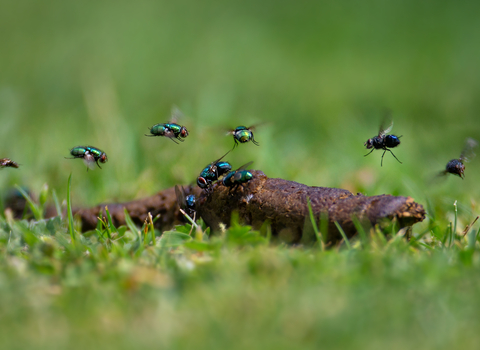
©Jon Hawkins - Surrey Hills Photography
What animal poo is this?
What poo is this?
Accept you found some fauna poo? Sometimes wild fauna is hard to spot, specially if it'due south nocturnal, then debris are a not bad way of finding out who is visiting your neighbourhood or garden at night. Here are some mutual British mammal droppings you might come across, besides as some tips on what to await - or smell - for!
Hedgehog droppings ©Darren Tansley
Hedgehogs
Hedgehog droppings are well-nigh 5 cm long, cylindrical and generally quite night. They might be filled with bits of insects and worms.
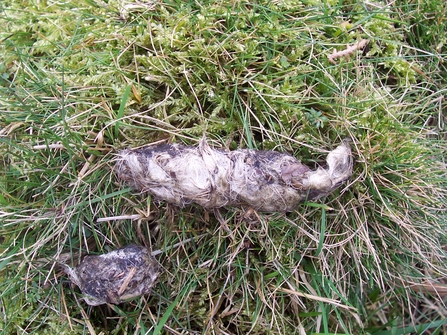
Fox scat ©Sue Crookes
Foxes
Foxes produce dog-like droppings that are usually pointy at 1 cease and full of fur, feathers, tiny bones, seeds and berries. In rural areas, flim-flam poo is quite nighttime, merely in urban areas, where foxes swallow human food waste material, it can be lighter. Fresh droppings have a distinctively musky or 'foxy' smell.
Rabbit and hare droppings ©Darren Tansley
Rabbits and hares
Debris are left in clusters of piffling, circular, hard balls. They are usually yellowy-brown or green in colour, and total of grass. Hare debris (on the right) tend to be slightly bigger and flatter than rabbit droppings (left hand side).
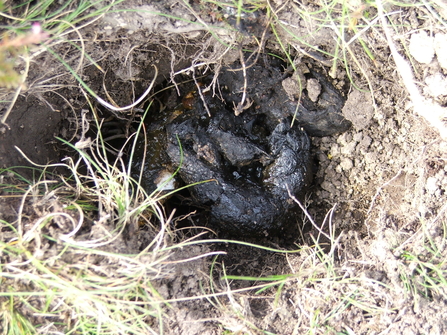
Annoy droppings in latrine ©Montgomeryshire Wildlife Trust
Badgers
Badgers poo in shallow pits called 'latrines'. Their debris vary from firm and sausage-shaped, to softer, slimier and darker if they've been eating lots of worms! Badger droppings have a sweet, musky smell.
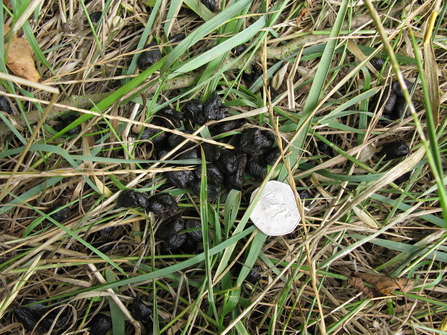
Deer droppings ©Darren Tansley
Deer
Because deer ruminate (regurgitate and chew their food twice before digesting it), in that location are no obvious contents in their droppings. They produce smooth, shiny, night pellets that are pointy at one finish and often stuck together in clusters. Deer that live in the UK include Chinese water deer, fallow deer, muntjac, red deer, roe deer and sika.
Otter spraint ©Darren Tansley
Otters and American mink
Both these mammals are found in like wetland habitats. Otters produce debris known as 'spraints', which are left in prominent places along riverbanks, on rocks or under bridges to mark out their territories. Otter spraints are usually nighttime light-green, slimy and full of fish basic, scales and crayfish parts. The 'scats' of American mink are smaller, black and incorporate fur, feathers and bones. Fresh otter poo smells like jasmine tea, while mink poo has a much less pleasant odour. This image is of an otter spraint!
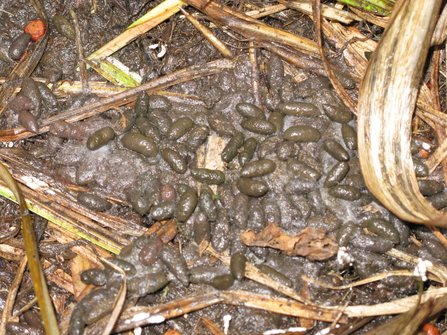
Water vole droppings © Darren Tansley
Water voles, rats and mice
Though they inhabit similar wetland habitats, the debris of water voles and rats have several key differences. H2o voles leave their droppings in large 'latrines' (piles), close to the water, whereas rats leave theirs in smaller numbers along paths. Water vole debris are smaller than rat droppings and are rounded at both ends; rat debris are flattened at one end and pointy at the other. H2o vole debris are greenish, chocolate-brown or purple, take a putty-like texture and no strong smell. Rat droppings are light brown to blackness, slimy and soft, and smell unpleasantly similar wee. Mice produce very like debris to rats, but they are much smaller.
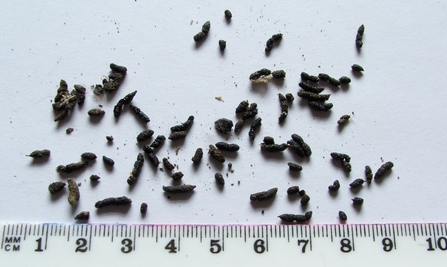
Bat droppings ©Montgomeryshire Wild animals Trust
What do I do if I come up across fauna poo?
Y'all might encounter fauna poo when you are at home, either in your garden or your outhouses, or when yous're out in the countryside. To identify it, take a annotation of the size, shape and color, and break it apart with a stick to see what's inside. Just never touch information technology – it can incorporate harmful leaner!
It looks similar poo, but could it be something else?
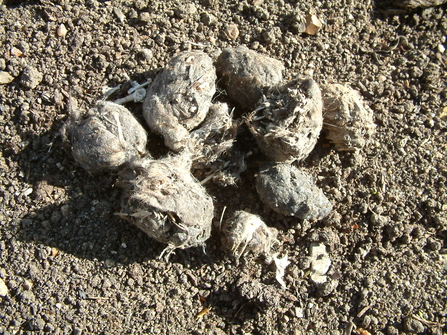
Owl pellets ©Martha Cowell
Owl pellets
Owls regurgitate parts of their food that they cannot digest, such equally the fur and basic of pocket-size mammals and birds. These 'pellets' can await like animal droppings, but practice non odour and gradually turn gray as they dry out.
Larn how to identify owls
How you tin help
As a charity we rely on memberships. They aid us wait after over 2,300 nature reserves and protect the animals that call them home.
Join for as little as £three a month
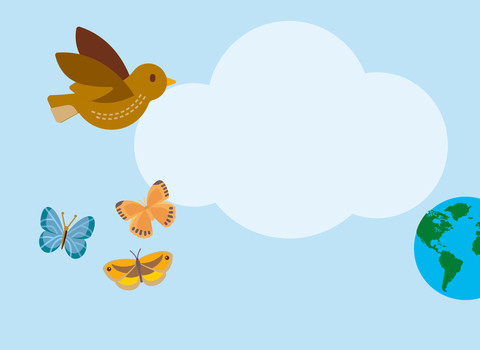
Source: https://www.wildlifetrusts.org/wildlife/how-identify/identify-poo
Posted by: stanleythistried.blogspot.com

0 Response to "How To Rell An Animal By Its Poop"
Post a Comment